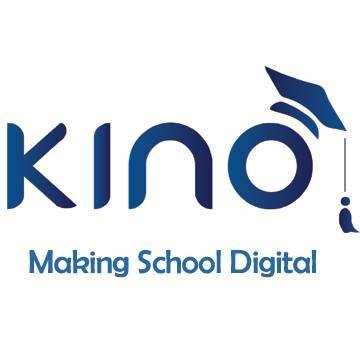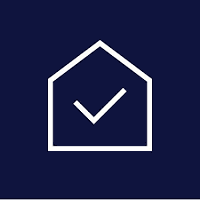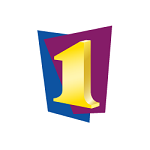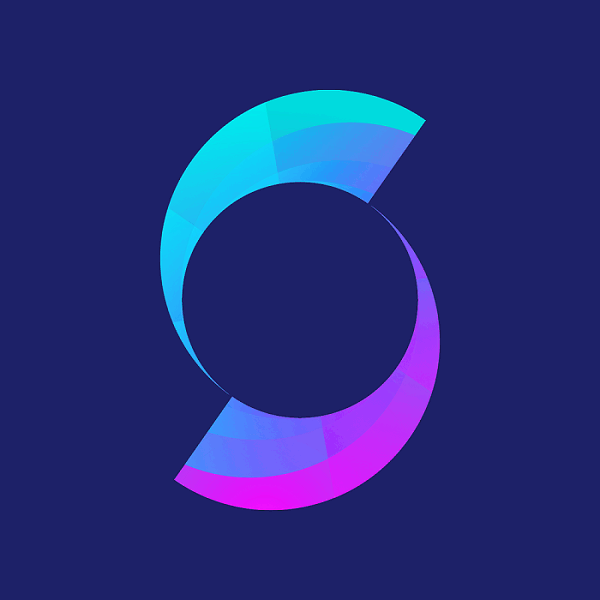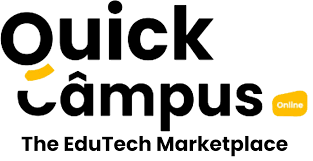What Is Student Health Records Software?
Student Health information Software is a comprehensive digital system developed to help educational institutions easily manage and preserve their students' health information. This software enables schools, colleges, and universities to securely store and organize each student's important health information, including medical history, immunization records, prescription details, and more.
One of the primary advantages of using Student Health Records Software is the ease of access it offers. This software allows authorized workers to easily access health records from any place with an internet connection, removing the need for physical paperwork. This not only increases efficiency, but also assures that critical information is quickly retrieved during an emergency.
Furthermore, Student Health Records Software facilitates smooth communication among school workers, healthcare providers, and parents/guardians. This allows for fast reporting and discussion on any health-related problems, ensuring that all stakeholders are on the same page about the student's health state. In addition to handling individual student data, this program has tools for tracking school-wide health statistics and creating automated reports, which provide educational institutions with useful insights into improving their students' general health and well-being.
When shopping for Student Health Records Software, it is critical to seek for a system that is secure, user-friendly, and flexible to meet your institution's specific requirements. It should also follow privacy rules and regulations, such as HIPAA, to safeguard sensitive student data. Investing in Student Health Records Software can help educational institutions manage and maintain student health records more efficiently.
With its secure and accessible platform, excellent communication capabilities, and significant data insights, this software is a must-have for promoting and maintaining student health and safety. Choose thoughtfully and choose the greatest decision for your school's student health record management requirements.
What Are The Recent Trends In Student Health Records Software?
The field of student health records software is always changing, with new trends emerging to satisfy the expanding demands of educational institutions. As technology advances, buyers must remain current on the newest trends in order to make informed purchasing selections for this critical system. Cloud-based methods are becoming increasingly popular in student health records software.
With the growing popularity of online storage and accessibility, more software companies are introducing cloud-based solutions. These systems enable seamless access to records from any location with an internet connection, facilitating collaboration and information sharing between schools and health practitioners. Another trend is the integration of telehealth capabilities into student health record software.
This enables remote consultations and appointments, which eliminates the need for students to physically visit the school clinic. With the current COVID-19 pandemic, this feature has become increasingly more critical to preserving the health and safety of students and staff. Data collection and analysis have also become critical components of student health records software.
With the ability to collect and analyze huge amounts of data, these systems can discover trends and patterns in student health, offering vital insights to administrators and healthcare providers. This can help schools make more educated decisions regarding health and wellness efforts, as well as identify potential risk factors for their children. As the digital landscape shifts, security has become a primary consideration for student health records software.
Many software suppliers now incorporate advanced security measures, such as encryption, multi-factor authentication, and regular data backups, to protect critical student health information. Finally, mobile accessibility is a current trend in student health records software. With the proliferation of mobile devices, it has become increasingly crucial for software to be compatible with smartphones and tablets. This enables for easy and mobile access to student health records, making it easier for school nurses and health professionals to deliver timely and efficient care.
Benefits Of Using Student Health Records Software
Student health records software is an important tool in the educational setting because it provides a complete and efficient method for tracking and organizing student health information. This type of software provides several benefits to teachers, school administrators, and healthcare professionals. If you're thinking about investing in student health records software for your school or educational institution, here are some key benefits to consider.
1. Centralized And Secure Storage Of Health Records: Student health records software enables the storage and organization of all student health information in a single, central location. This allows authorized users to easily access and update records, lowering the risk of data loss or misplacement. Furthermore, these software solutions provide high levels of data security, guaranteeing that sensitive health information is kept secure.
2. Increased Efficiency And Precision: Manually organizing and updating student health records is a time-consuming and error-prone process. Everything in student health records software is digitized and automated, saving time and reducing the danger of human error. This enables more accurate and up-to-date records, resulting in better healthcare decisions for students.
3. Real-Time Access To Health Data: In the event of a medical emergency, having immediate access to a student's health information is crucial. Healthcare practitioners may immediately view a student's medical history, allergies, and other important information using student health records software in order to give the best possible care. This might be especially useful for students who have chronic health conditions or need special accommodations.
4. Features That Can Be Customized To Meet Varied Needs: When it comes to student health records management, each school or educational institution has its own set of needs. Student health records software provides customizable features and modules, allowing you to create a solution that is tailored to your school's specific needs. These may contain features like vaccine tracking, appointment scheduling, and prescription lists.
5. Better Communication And Teamwork: Effective communication and collaboration between teachers, school officials, and healthcare experts are critical for ensuring kids' well-being. Student health records software enables seamless sharing of information and updates, resulting in improved coordination and support for student health requirements.
Important Factors To Consider While Purchasing Student Health Records Software?
When choosing student health records software, there are a few critical aspects to examine to guarantee that the software fulfills your educational institution's specific requirements. These factors include:
1. Compliance With Regulations: When purchasing student health records software, one of the most important factors to consider is whether it complies with applicable regulations, such as the Family Educational Rights and Privacy Act (FERPA) and the Health Insurance Portability and Accountability Act. These regulations provide guidelines for the security and privacy of student health information, making it critical to select software that satisfies these requirements.
2. Customization And Scalability: Each educational institution has specific demands and requirements for student health records software. Choose software that can be adjusted to match your institution's specific workflows and operations. Furthermore, the software should be able to scale with your organization as it expands.
3. User-Friendly Interface: Both medical practitioners and administrative workers should be able to utilize the software easily. This will help to ensure that all users embrace and use the program efficiently.
4. Integration With Current Systems: Many educational institutions already have systems in place to manage student data. To eliminate repeated data entry and streamline operations, select student health records software that integrates easily with these platforms.
5. Support And Training: As with any new program, it is critical to assess the amount of support and training given by the vendor. Look for a provider who provides full training and continuous support to ensure that your staff is comfortable and proficient with the software.
6. Data Security: Because student health records contain sensitive and confidential information, it is critical to select software that has strong data protection features. This incorporates encryption, access controls, and scheduled backups.
7. Reporting And Analytics: A decent student health records software should provide comprehensive reporting and analytics features. This enables you to track and analyze critical data, detect patterns, and make informed decisions to promote student health and well-being.
8. Cost: When purchasing new software, cost is usually an important concern. It is crucial to strike a balance between quality and price. Consider the software's features and support, as well as the prices given by other vendors, to determine the greatest value for your institution.
By carefully examining these elements, you can guarantee that the student health records software you choose matches your educational institution's specific goals and standards, as well as offering the security and functionality required to efficiently manage student health information.
What Are The Key Features To Look For In Student Health Records Software?
When it comes to selecting the best Student Health Records Software for your educational institution, there are numerous crucial factors to consider. These features will not only enable effective and accurate handling of student health information, but will also ensure privacy requirements are followed and healthcare professionals can utilize the system easily.
Let's explore, we will highlight the key characteristics to consider while making a purchase decision.
1. User-Friendly Interface: An easy-to-use interface is an important characteristic to look for in Student Health Records software. The software should be simple and straightforward to use, especially for non-technical people. This ensures that healthcare practitioners can rapidly capture and access student health information without requiring substantial training.
2. Customizable Forms: Good Student Health Records Software should provide customizable forms that may be tailored to your institution's specific requirements. This will allow you to collect and track all of the students' health information, including immunization records, prescriptions, allergies, and medical history. Customizable forms will also make it easier to fulfill the specific needs of various educational programs.
3. Secure Data Storage: The protection and confidentiality of student health information is critical. As a result, it is critical to use software that provides secure data storage. Look for features like password protection, encryption, and regular data backups to secure critical student health information from unauthorized access or cyber threats.
4. Electronic Health Records (EHR) Integration: By integrating your Student Health Records Software with an EHR system, you may speed up the documentation process and improve communication between healthcare professionals and students' primary care physicians. This function provides real-time access to essential medical information, saving time and preventing data entry errors.
5. customisable Reporting: The ability to create customisable reports is critical for monitoring and tracking student health information. Look for software that provides pre-designed and configurable reports that will help you understand your student population's health patterns. This feature can also be useful in detecting future health problems that may necessitate intervention.
6. Emergency Response Plans: In the event of a medical emergency, emergency response plans must be available. Select Student Health Records Software that enables you to build and save emergency response plans for individual students, as well as emergency protocols for various health circumstances. This feature has the potential to save lives in the event of a medical emergency.
7. Mobile Accessibility: In today's fast-paced environment, having access to information while on the go is vital. Look for Student Health Records Software that has mobile accessibility. Healthcare providers will be able to access student health information at any time and from any location utilizing mobile devices.
Why Do Businesses Need Student Health Records Software?
Student Health Records Software is a crucial tool for firms in the education sector. It provides a comprehensive solution for maintaining student health records in digital format. With a growing emphasis on student well-being and an increase in medical concerns among young people, educational institutions must have a streamlined system in place to track and monitor their students' health.
Having a dependable Student Health Records Software enables organizations to centralize all student health information in one secure platform, removing the need for paper-based records and lowering the danger of data misplacement or loss. This saves time and effort while also ensuring that authorized workers have easy access to accurate and up-to-date information.
Student Health Records Software also includes advanced features including configurable electronic forms, automated vaccine and appointment reminders, and real-time alerts for urgent health conditions. These capabilities not only increase the efficiency of health record maintenance, but also facilitate communication among school staff, parents, and healthcare practitioners.
Furthermore, Student Health Records Software enables organizations to comply with regulatory standards while maintaining the confidentiality of student health information. The software supports stringent access controls and data encryption, which ensures data privacy and security. This is especially crucial for safeguarding sensitive data including medical conditions, medication details, and immunization records.
Having a thorough Student Health Records Software can also improve students' general health and well-being. With fast access to health records, schools can address any health concerns and provide appropriate care. This, in turn, can boost student attendance and academic achievement.
How Much Time Is Required To Implement Student Health Records Software?
The time it takes to install student health records software depends on a number of factors, including the size of the institution, the complexity of the software, and the level of customization necessary. However, on average, the implementation phase can last from a few weeks to several months. During the initial stages, the software vendor will collaborate closely with the institution's IT staff to establish the necessary infrastructure and assure compatibility with current systems.
This could include migrating data from previous record-keeping systems and providing significant training to employees. Once the software is fully configured, it must go through a testing step to find any defects or issues that need to be addressed. This process may include input from multiple departments and stakeholders to verify that the software satisfies the institution's specific requirements.
After the testing step is completed and any necessary adjustments have been made, the software will be ready for release. Typically, the implementation team will give continuing support and guidance during the early phases of adoption to facilitate a smooth transition and to address any questions or concerns raised by staff. Overall, the time necessary for deployment will be determined by the institution's readiness for change, the extent of stakeholder involvement, and the software's complexity.
Institutions adopting student health records software must have a clear grasp of their needs and be willing to invest the time and resources required for a successful implementation.
What Is The Level Of Customization Available In Student Health Records Software?
The level of customization available in student health records software varies by platform and vendor. However, most software solutions in this area provide extensive customization to fit the specific demands and preferences of educational institutions. One feature of customization in student health records software is the ability to tailor the program to the specific workflows and operations of the school's health clinic.
This can include modifying forms, templates, and data fields to meet the school's documentation requirements. Customization also includes the option to link with other systems and applications, such as electronic medical records (EMR) or student information systems (SIS). This enables for smooth data transport while reducing the possibility of errors or duplication.
Furthermore, student health records software may allow schools to customize the user interface with their own branding, logos, and colors. This contributes to the records system's overall consistency and professionalism. Some software solutions may additionally include the capacity to generate bespoke reports and analytics, allowing schools to track and evaluate health data particular to their student demographic.
This can help discover trends, assess program success, and make educated decisions. Overall, the level of customisation available in student health records software can significantly improve the user experience, increase productivity, and assure adherence to school policy and regulations. When making a purchasing decision, consumers must consider their individual demands and extensively evaluate the customization options provided by various software vendors.
Which Industries Can Benefit The Most From Student Health Records Software?
Student health records software can be an invaluable tool for managing students' health and wellness data across a variety of businesses. This software can tremendously assist these businesses by streamlining operations, improving communication with stakeholders, and ensuring student safety and well-being.
Let's take a closer look at which industries will profit the most from student health records software.
1. Education Institutions: Student health records software can provide considerable benefits to educational institutions such as schools, colleges, and universities. This program enables them to easily manage students' health records, track vaccines, allergies, medication, and medical history, and securely save and access sensitive data. It also helps to monitor and warn parents and staff of any health concerns or outbreaks, ensuring a safe and healthy environment for pupils.
2. Healthcare Practitioners: Student health records software can help healthcare practitioners that work with students, including school nurses, pediatricians, and mental health counselors. This program gives them access to accurate and up-to-date student health information, allowing them to make informed medical decisions and deliver timely and appropriate care. It also facilitates communication with parents and school staff, decreasing the possibility of misunderstandings and guaranteeing a coordinated approach to student health care.
3. Sports Organizations: Student health record software can be extremely useful for sports organizations, such as schools and youth leagues. It enables them to track and monitor the health status of student-athletes while also ensuring that all participants complete the essential requirements, such as physical exams and immunizations, prior to engaging in sports events. It also aids in the identification of any injuries or health concerns, hence enhancing players' general well-being.
4. Government Agencies: Public health departments and child welfare groups can use student health records software to monitor and track the health data of students in their care. This enables a more structured and efficient approach to monitoring and promoting the health of young adolescents, particularly those in foster care or associated with the juvenile justice system.
5. Insurance Companies: Student health records software can help insurance companies acquire access to reliable and up-to-date student health data. This can help with underwriting and risk assessment, assuring sufficient coverage for students, and lowering the chance of fraud or error.
Conclusion
Finally, selecting the appropriate student health records software is critical for effectively organizing and storing students' health information. With the growing demand for digital solutions in education, investing in comprehensive and user-friendly health records software can reap several benefits for your school. When making a decision, numerous variables should be considered, including the institution's specific goals and requirements, budget, and software usability.
Furthermore, choosing software that supports automated processes, data privacy and security, and seamless connectivity with other systems can improve the overall efficiency and efficacy of the records management process. Furthermore, completing extensive research, reading reviews, and speaking with other institutions that have used similar software can provide significant insights and assist in making an informed selection. We hope our buyer's guide helped you gain a thorough understanding of student health records software and its features. With careful study and consideration, you can locate the ideal software to match your institution's goals while also simplifying student health records management.




